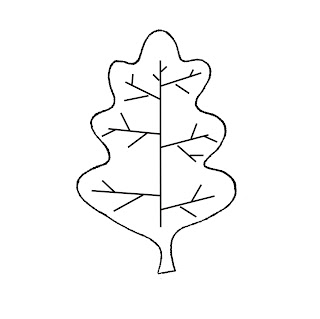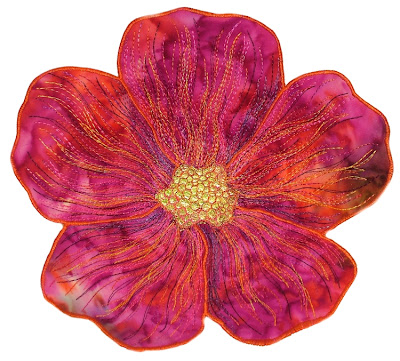This has been a learning experience for me as well! In the past I have had a blog and posted to it maybe twice a year... maybe. Blogs have come a long way since then and when I started this one I had to essentially re-learn it all. I am glad I did though, this has really been a rewarding experience for me!
Combining Stitches
Before we end this series, I wanted to show you some examples of combining the stitches we have learned. While many of the pieces I have done use only one type of stitch, Thread Painting is extremely effective when the different stitch techniques are combined.
In the Hummingbird and Fuchsias quilt, the leaves and parts of the flowers use a directional zigzag stitch, while other parts of the flower and the buds use a directional straight stitch in order to emphasize the shape.
In this detail shot of a vest I made years ago, the pansy flowers use both the meander zigzag and the directional zigzag stitching. Notice the leaves use the directional zigzag to applique them, giving them a more feathery look.
And finally, this Lily was done using fabric paint and then Thread Painted. A directional straight stitch and a directional zigzag were used. The stamen details were also added using a very dense directional zigzag stitch.
Calling for Your Input
Have you been practicing your Thread Painting? I'd love to see what you've been working on and I am sure everyone else would too! If you have played with the Thread Painting techniques on a project or practice piece, I'd like to post some photos right here on the blog. So finish up those projects, or even a Work In Progress and send a .jpg file along with what you used and where and we will get it up on the blog. Do you have questions or need advice or clarification on something? Send those too and I will try to answer as best as possible. Pictures are worth a thousand words, so try to send a picture ( in a .jpg format please) along with your questions, comments, or success stories. How to get in touch with me? Click here to Email me.
Whats next??
That is my question... I plan on sharing what I am doing in the studio, whether it is a pattern or project in progress (I have several of those going!) or just Fun Stuff that I come across or am playing with or learn about. But what I'd like to know is what do you want to see? Let me know!
A Great Big Thank You!
I want to tell you all Thank You for all the support, the encouraging words, for sharing the link here and for just plain reading and learning from this series. I can't tell you how much fun I have had interacting with all of you!
Angela R McIntyre
Laughing Cat Designs






























